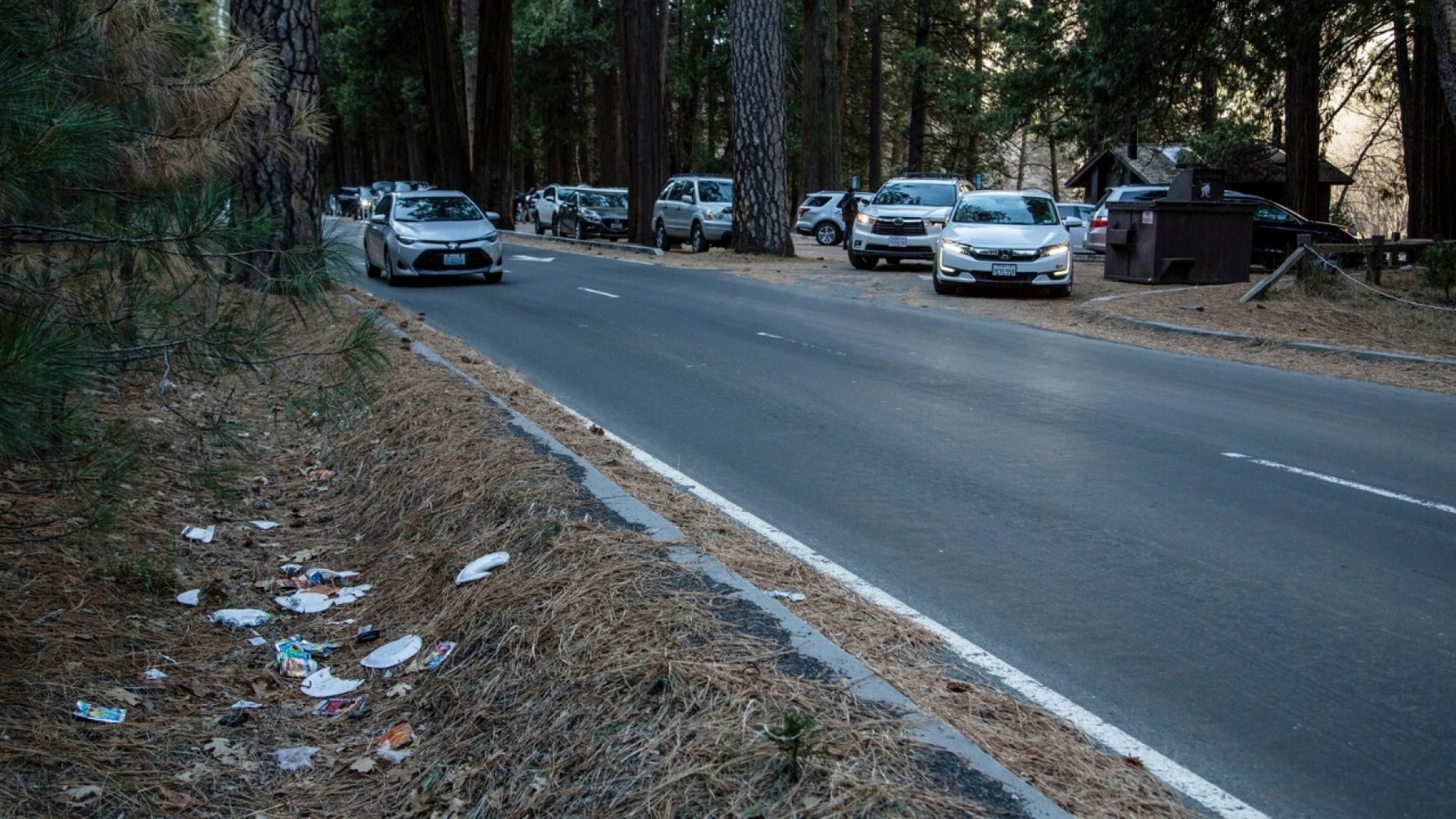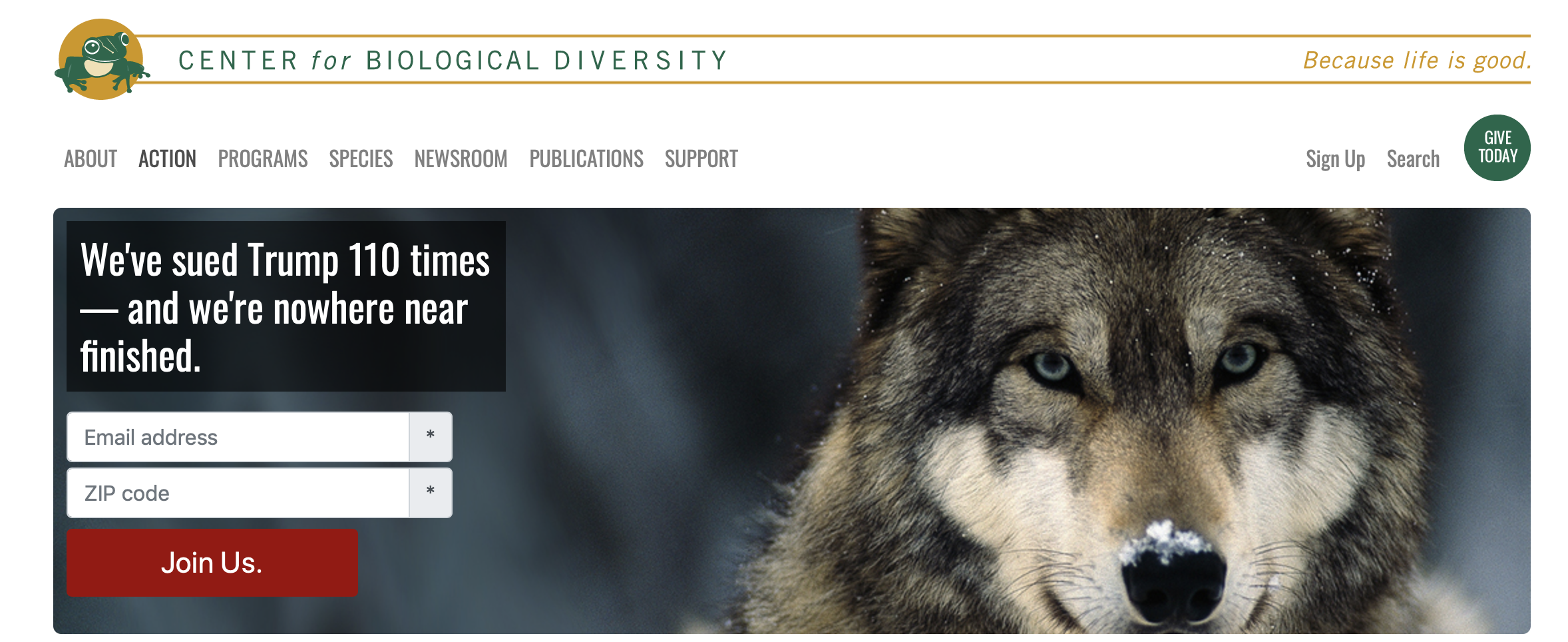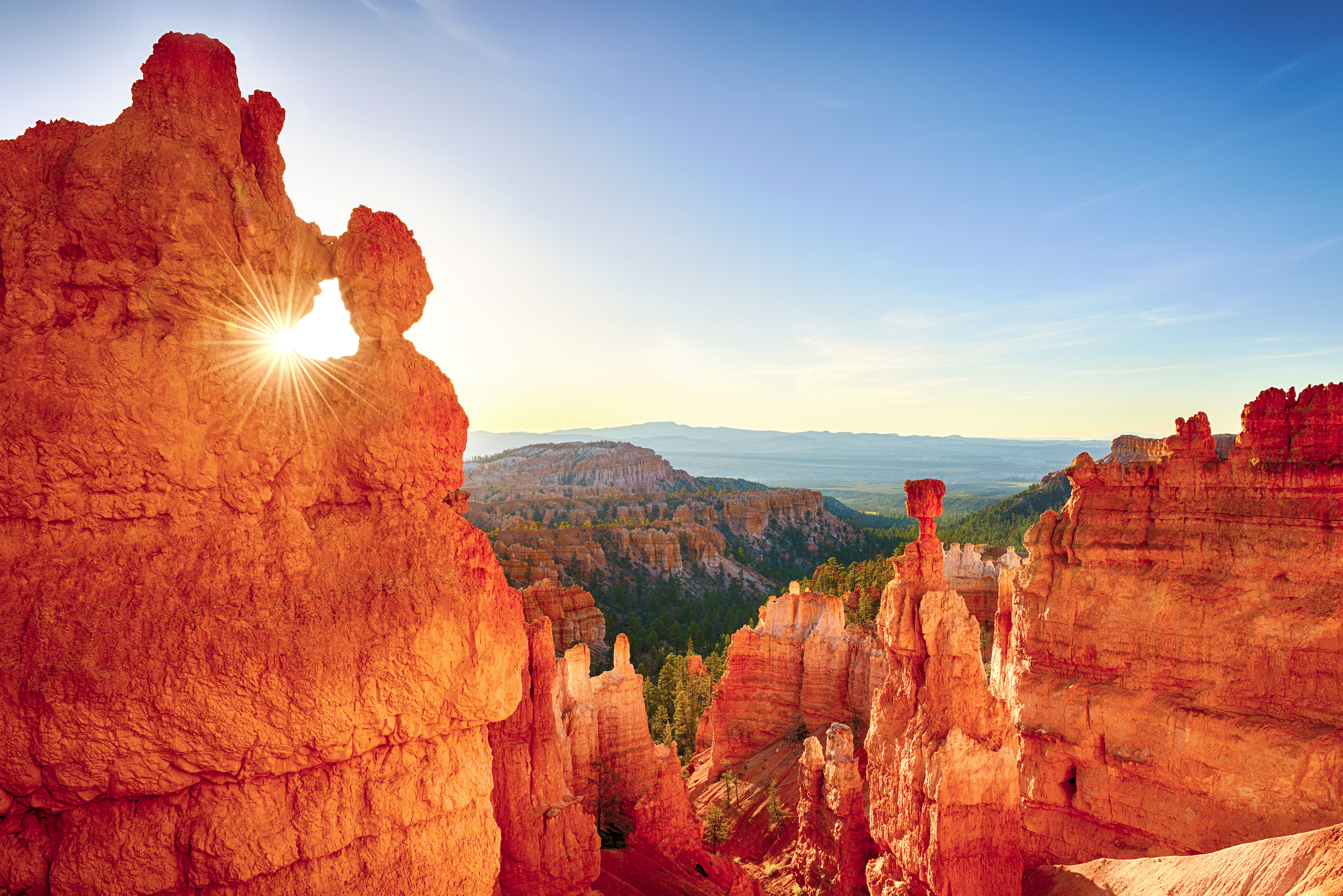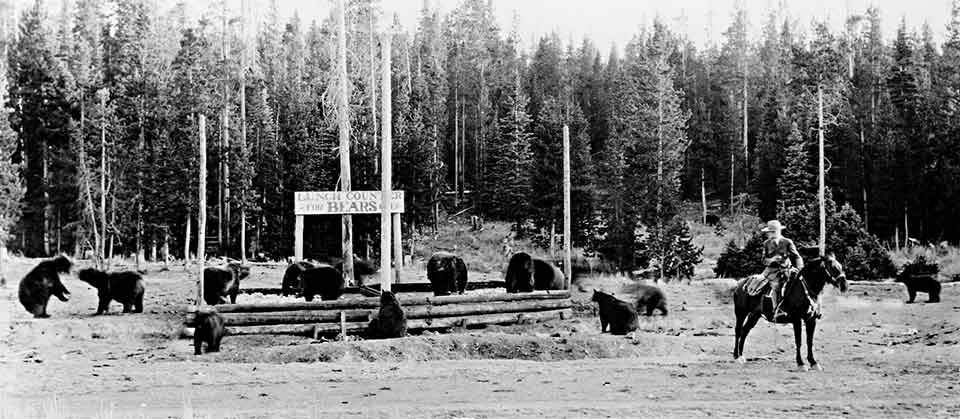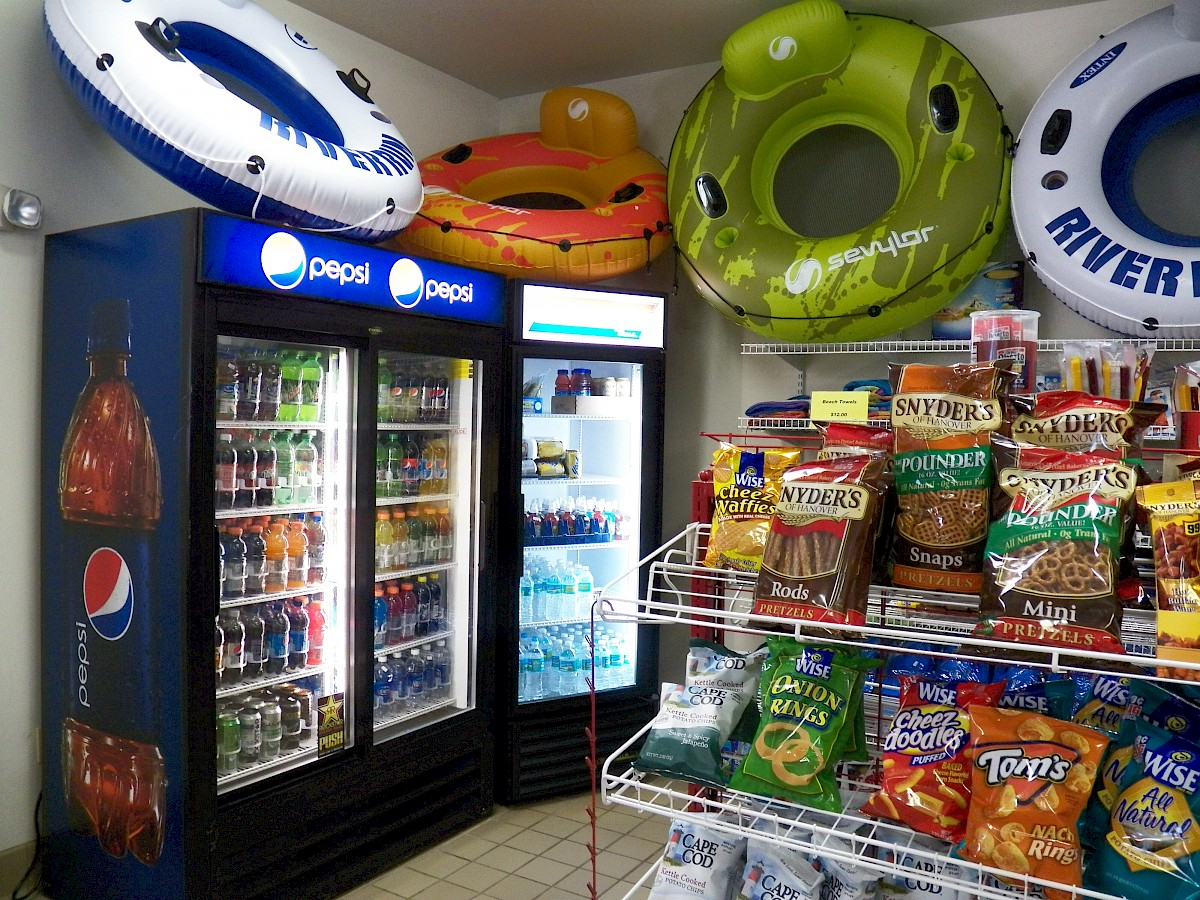Federal and state governments control more than one-third of all land in America. What distinguishes these more than 785 million acres of “public lands” from the rest—including the land your home sits on—is that, at some point, the government decided only it could ensure that these lands would be used wisely.
Presumably, most people want the remaining two-thirds of American lands to be used wisely, too. So it’s interesting that the government doesn’t apply the same logic to these. Would we be better off if bureaucrats made all decisions about what to build and where to build it; what crops to plant and where to plant them; where you may live, the size of your lot, what you may and may not do in that area, and so on?
Virtually no one today thinks so, recognizing that private ownership of land makes sense when it comes to the places we live and work. So what makes “public lands” different? It’s an important question, in part because the government has not used these lands wisely (and, as we’ll see, cannot do so).
The National Park Service (NPS) is far behind on necessary maintenance, and many of the sites it controls are being run into the ground. As one witness told a congressional subcommittee in 2018, the NPS’s maintenance shortfalls have resulted in “dilapidated visitor centers, deteriorating wastewater systems, and crumbling roads, bridges, and trails.”1 Maine Senator Angus King has warned, “The existing $12 billion maintenance backlog threatens to prevent future generations from accessing these beautiful public lands.”2 According to the NPS, it needs $5.9 billion to repair roads, bridges, tunnels, and paved parking areas, plus another $5.7 billion to repair buildings, housing, campgrounds, trails, wastewater systems, utility systems, dams, marinas, aviation systems, railroads, ships, monuments, fortifications, towers, amphitheaters, and more.3 A 2017 study by the Congressional Research Service reports that Yellowstone and Yosemite—the crown jewels of the NPS—are third and fourth on a list of parks with the highest dollar amounts of deferred maintenance, requiring $663 million and $555 million, respectively.4
Similar problems occur at state and local levels. “The state of Ohio,” wrote one reporter in 2013, “confronts the realization that Cleveland’s pride and joy, its 455 acres of woods and urban beaches along Lake Erie, is so cluttered with trash as to make stretches nearly unusable.”5
Then there’s the U.S. Forest Service (USFS), which controls 193 million acres of land in America—more than the total area of Texas and South Carolina combined.6 The USFS harvests timber at enormous losses, totaling billions of dollars each year. And because the government grants the agency our tax dollars based largely on how much timber it sells, the USFS is incentivized to harvest as much as possible with little consideration of other factors. Some have accused the agency of “clear-cut corruption” and engaging in practices that are more “ecologically destructive” than those of private, profitable logging companies.7 The USFS also has a history of extinguishing all forest fires, including natural fires that, when left to burn, thin forests to healthy levels and spawn new growth. This practice has resulted in uncommonly dense forests in some areas, which inevitably do catch fire and burn with abnormal intensity, threatening and often destroying neighboring communities.8
There’s also the Bureau of Land Management (BLM), which controls 248 million acres, a combined area about the size of Egypt. Despite the fact that much of this land is rich in potential resources, the agency doesn’t create enough value to break even; and each year, the government spends hundreds of millions of dollars to support the agency.
The government also spends several billion dollars per year on the Fish and Wildlife Service (FWS), which controls 89 million acres—a combined area larger than Germany. We might imagine that the agency stays busy saving polar bears, caribou, and the like on the millions of acres it manages and that it does so for the benefit and enjoyment of taxpayers. But the reality is much different. The FWS recognizes virtually no bounds to its jurisdiction and often acts in ways extremely destructive to human values.
For instance, the FWS listed the Delhi Sands flower-loving fly as an endangered species after a University of California entomologist petitioned the agency with highly speculative data. He claimed that population levels had fallen precipitously, though he couldn’t specify what those levels had been. In the words of an FWS biologist, “Anecdotal conclusions concerning the past abundance of the Delhi Sands flower-loving fly may be inferred from museum specimens. . . . However, the lack of data concerning the size of the habitat, time periods, and intensity of collecting [specimens] precludes a definitive analysis” regarding previous population levels.9 Nonetheless, the FWS listed the fly, which forced San Bernardino County to redraw plans for a hospital—at a cost of about $3.3 million—because eight flies were found in the area where it was to be built. That’s the cost of about 2,043 moderately severe emergency room visits.10 After the county incurred further related expenses, California Assemblyman Joe Baca reflected, “This insect that spends most of its life underground living as a fat, clumsy maggot cost the county more than a half million dollars per fly.”11
If we look at the big picture, we see that bureaucrats control a massive amount of land, and each year they spend billions of dollars of taxpayer money to manage it.12 In return, we get public campgrounds and parks that are crumbling under our feet, timber and other potential resources harvested either at a net loss or not at all, and vast tracts of other lands—lands that could be used to grow communities, create jobs, boost economies, and improve people’s lives—that are barred from development.
In short, this situation has turned a massive amount of potential value into an endless drain on the lives of Americans. And while costs go on rising, this potential is continually degraded. America unquestionably faces a public lands crisis. How can we stop wasting all of this potential and, instead, use it to improve our lives?
The same way we transformed the rest of America from an untamed wilderness to a land of plenty: by enabling people to use the available land and raw materials to create values and to benefit from their work. That is, if we want to put public land to its most life-enhancing uses, we need to privatize it.
Land is only a potential value, and in order for it to become an actual value, people must transform it into something useful. For instance, where I live there are many rivers and lakes filled with fish. But until someone figures out how to catch them and then puts forth the effort to actually do so, the fish remain only potential values—and we can’t eat potential values. Nature provides raw materials such as seeds, soil, and sunlight. But people must discover what, when, and where to plant, how to keep crops healthy, how best to harvest them, how not to exhaust the nutrients in the soil, and so forth. Nature provides coal, crude oil, and natural gas. But it’s up to individuals to unearth these, discover their properties, and transform them into the fuels that power modern life. Every value we depend on requires thought and effort.
Even turning wild areas into scenic parks for people to enjoy requires thought and effort. We must find and work the land; make it accessible by building and maintaining roads, trails, and bridges; start and oversee controlled burns; fight life-threatening forest fires; provide appropriate safety measures and guidance for visitors; pick up trash and dispose of waste; offer basic provisions and accommodations; and much more.
When people create values—whether food, scenic parks, or anything else—they need the ability to use and dispose of them. A farmer can’t sustain his life if his neighbors dig up and eat the crops he plants. He can survive and thrive only when others recognize and respect the fact that the food he cultivates is his. In order to live, he needs to be able to eat his produce, feed it to his cows, turn it into biofuels, sell it, or put it to some other life-serving use.
And we can see that the same thing applies more broadly. If we want to live in a world where we and others can flourish, we need to recognize and protect the rights of people to the values they create; we need to recognize and protect property rights. To recognize property rights is to acknowledge that those who create values—by virtue of the fact that they created them—morally have sole authority over them. This is why they are often referred to as private property rights. To the extent that an owner’s rights are protected, he gets to decide how to use his property.
Private ownership enables owners to decide how to use their property in the ways they think best. A property owner can project a vision and work to bring it into existence—he isn’t tied down by the goals, opinions, or envy of neighbors, competitors, or government planners. The creators of new inventions—from coffee to computers to GMOs—have often encountered great resistance to their ideas and products. Those who are successful are so only because they are able to use their property by right rather than by permission. Private property rights safeguard human creativity.
By protecting a man’s authority over the values he creates, property rights preserve the link between effort and reward, thereby leaving people free to produce goods and services and incentivizing them to do so. For example, last year, my wife and I had the opportunity to move temporarily into a lake house. Instead of letting our own home sit unused, we decided to set it up as an Airbnb, and we spent time and money to do so. We spruced up the landscaping, added amenities, and made it as inviting as we possibly could. In less than a year, we racked up rave reviews, became “super hosts,” and made some money.
But we never would have done all that work if any stranger could barge in and use our house without paying. What motivated us was that we expected something in return for our effort. We knew that whatever we earned would be ours.
By contrast, everyone “owns” public lands, which means that, in practice, no one does. No one—not even a government agent—has a right to use public land fully in accordance with his judgment. Public land managers are forced to pursue goals set by bureaucrats—goals that often conflict. What’s the result? Suppose I was similarly forced to use my property in accordance with a bureaucrat’s wishes. (This, in pattern, is what happens to many owners of ostensibly private property in America today.) Maybe I think that providing my guests with a nice, relaxing hot tub will increase their enjoyment, which will improve my reviews and so forth. So I have one installed for several thousand dollars. But a week later, a superintendent of experience in the Bureau of Rental Properties rules that hot tubs are “outside the scope of proper rental experience and must be removed.” Maybe he’s inundated with pleas from “green” lobbyists who complain that hot tubs are power-sucking appliances that lead to increased pollution. Or maybe animal-rights activists convince him that, nationwide, the water saved from not filling hot tubs will benefit aquatic life.
Whatever the superintendent’s motive, I’m out several thousand dollars and an opportunity to delight my guests. I’m forbidden to act on my own judgment and maximize the potential of my property. If the next week he rules that the cornhole boards I spent a weekend building are distracting would-be hikers and must be removed, and the next week that I have to get rid of my home’s open bar, how long do you think I’ll continue attempting to innovate and create value? Without private authority over my property, I can’t decide on and try new things. I’m essentially barred from creating values on my property.
This is the straitjacket that public land managers are sentenced to wear. Ultimately, they have no right to do what they think will be most valuable with the public lands they manage. They are forced to pursue conflicting goals set by other bureaucrats and must attempt not to raise the ire of environmentalist pressure groups. As lifelong National Park Service employee William Everhart pointed out,
When Congress established the parks bureau it directed that the scenery, the natural and historic objects, and the wildlife be preserved, but that these resources were to be made available for people to enjoy. The instruction to preserve the parks unimpaired, while at the same time building facilities for public use, does seem contradictory. Building a road that allows people to enter a park obviously does cause damage to the landscape. Almost every decision affecting the parks involves the balancing of preservation and use values. . . . (Perhaps the preservation-use debates explain why Park Service people use the expression “between a rock and a hard spot” so frequently.)13
Imagine a smartphone company whose board was, in every decision, torn between using its stock of components to build phones, or letting those components sit idle in a warehouse. The debate between “use” and “preservation” is similar—except that the CEO of the smartphone company eventually could exercise his authority to make a decision. Those managing public lands have no such authority. Ultimately, they are at the mercy of bureaucrats to decide whether they can build a new park, road, trail, or boardwalk; stock lakes for fishermen; add new campsites; offer kayak rentals; or create any other value.
Because no one has private authority over public lands, they are subject to an endless tug-of-war between various bureaucrats and pressure groups. As Mike Courtney, a BLM field office manager in Burley, Idaho, put it, “We’re kind of in a box, with regulations, laws, policy and case precedent being the sides of the box, and every time we get sued and win or lose, the shape of the box changes a little bit. And lately, it’s been shrinking.”14 By ordering agencies to pursue conflicting goals, Congress not only confuses and demoralizes government employees and reduces their productivity, it also paints a target on the agencies for sue-happy environmentalists. Groups such as the Center for Biological Diversity—whose recent website banner boasted of having sued the Trump administration over public land and wildlife management issues “110 times—and we’re nowhere near finished”—leverage the contradictions inherent in American land policy to minimize human use of public land. In essence, their view is that government land-management agencies exist not to protect public lands for people, but to protect them from people. Although this view contradicts the mission statements of the agencies managing these lands, the government has given opponents of “human use” the legal tools to enforce their agenda.
For instance, the mission of the USFS is “to sustain the health, diversity, and productivity of the Nation’s forests and grasslands to meet the needs of present and future generations.”15 Despite the agency’s essentially utilitarian mission—focused on meeting needs—in 1964, Congress passed the Wilderness Act. It required the agency to set aside millions of acres, not for any use, but to be preserved in their “primeval character.” The law also required the USFS to review its holdings and recommend other lands for “Wilderness” designation. After the USFS had spent a decade conducting its review, environmentalist groups successfully sued to broaden the review criteria, forcing the agency to start the expensive and time-consuming process all over again and, ultimately, outlawing even minimal development on millions more acres.16 As of 2016, about 110 million acres of American lands were designated as “Wilderness,” essentially closing them off to all but hikers, campers, and some farmers. That’s a total area larger than California.
Sadly, those who oppose human use are winning, and their view that lands should be protected from people instead of for them has become increasingly common within the agencies themselves.17 Is it any wonder then that public land agencies—despite the tens of billions in tax dollars spent on them annually—create little or no value? Unlike private property owners, government appointees are not free to innovate, and they aren’t incentivized to. People charged with managing these lands are indeed stuck “between a rock and a hard spot,” between conflicting laws and directives, in a flux of aggressive pressure groups and shortsighted bureaucrats.
But, in another sense, their position is quite cushy. If you or I fail to create value that other people are willing to pay for, we don’t get paid. If a smartphone company builds no phones or crappy ones, it goes out of business. If a farmer fails to maintain his land properly, his crops won’t grow, and he won’t make any money. And if I let my Airbnb fall apart and, consequently, no one wants to stay there, I can’t make them. But we all are forced to pay for public lands and the agencies that manage them, whether or not we use those lands and whether or not they’re well maintained.
What makes the situation still worse is that “public property”—and the potential values therein—are commonly degraded. Most of us have witnessed this personally, whether at a public park or a public restroom. When I was fourteen, a friend’s dad helped me and a few other kids raise money from donors to build a skatepark. It was state-of-the-art, all concrete, and built on grounds within the town’s existing public park. I loved it and went there every day, and it bothered me when other kids dumped soda on the pavement, spit on the ramps, and left trash everywhere. When I asked them not to destroy the place, most didn’t listen. I could do nothing but pick up the trash myself and skate around the sticky soda and spit until it rained hard enough to wash them away. Many who use public property do not treat it with the same care and respect they would their own. In 1968, this observation led ecology professor Garrett Hardin to write:
The National Parks present another instance of the working out of the tragedy of the commons. At present, they are open to all, without limit. The values that visitors seek in the park are steadily eroded. Plainly, we must soon cease to treat the parks as a commons or they will be of no value to anyone.18
In many ways, the state of the parks today bears out Hardin’s claim.
But we need not settle for this mess. The key to solving our public lands crisis is clear. If we want to put public land to its most life-enhancing uses, we need to privatize it. Only then will people have the rights and incentivizes necessary to actualize the potential of these lands.
But what if private owners destroy iconic places such as Yellowstone or the giant sequoia groves? What if some billionaire nihilist dynamites Bryce Canyon?
Generally speaking, people don’t aim at destroying beauty for the same reason that most of us don’t actively try to run over squirrels: Such destruction is pointless. When it comes to iconic places—tourist destinations that draw millions of visitors from all over the world—private owners would have massive incentives to preserve their beauty. As the developer Warren Meyer put it, “Personally, I’ve never been incentivized to destroy natural beauty. People pay me for it.”19
It’s unlikely in the extreme that private owners would destroy places such as Bryce Canyon if they held the deed. In fact, during the 2018–19 government shutdown, private companies and nonprofits stepped in to fund and administer several national parks. For instance, the Utah-based company Alsco Inc. donated $100,000 to keep Zion, Arches, and Bryce National Parks operating while the federal government was shut down during Presidents Day weekend.20 There’s no reason to suppose that those who would voluntarily fund the parks when the government fails to would destroy them if they owned them.
For the same reasons, privatization would not incentivize turning all of those lands into strip malls, gas stations, and the like. People need and want lots of different values, and one thing that a lot of people find enjoyable and rejuvenating is spending time in nature. This, in part, is why The Nature Conservancy, the largest conservation organization in the Americas, is able to raise hundreds of millions of dollars each year from donors to purchase and preserve lands.21 Many people also enjoy spending time among wildlife and doing what they can to help magnificent animals thrive, which is why places such as Wolf Park in Indiana and Tiger Haven in Tennessee exist and are able to attract donors, paying visitors, and volunteers.
Different goals require different degrees of development, and some areas offer greater potential for some uses than others. But whether an owner decides on a goal that requires minimal or intensive development—fences to keep animals contained or factories to manufacture automobiles—his authority over his property enables him to do what he thinks best with it. Because property rights protect this freedom, they are as vital to the conservationist as they are to the condo developer. Whether we support lots of development or little—or different degrees of development in different areas for different live-serving purposes—we all depend on property rights.
To the extent that property rights are not protected, conservation organizations are as crippled as any other. For instance, chapter 1 of The Elephant Whisperer by the late South African game preserve owner Lawrence Anthony begins:
In the distance, the percussive shot of a rifle sounded like a giant stick of firewood cracking. I jumped out of my chair, listening. It was a sound wired into a game ranger’s psyche. Then came a burst . . . crack-crack-crack. Flocks of squawking birds scrambled, silhouetted in the crimson sunset. Poachers. On the west boundary.22
“Poachers,” he wrote, “had been the scourge of our lives since my fiancée Françoise and I bought Thula Thula, a magnificent game reserve in central Zululand.” Without protection for their property rights, The Nature Conservancy, Wolf Park, Tiger Haven, and similar organizations simply could not preserve the land, lakes, streams, wolves, coyotes, foxes, bison, tigers, lions, and countless other animals and environments that they do. Their authority over their lands enables them to pursue these goals, and their property rights protect their ability to do so.
Interestingly, although some environmentalist groups are the loudest spokesmen for keeping “public lands” public, the lack of private authority on these lands often frustrates conservation efforts as much as it does development-intensive ones.
Consider that for years, and to the growing alarm of many, national parks featured “lunch counters” where NPS rangers dumped trash to lure bears to where tourists could see them.23 Yosemite even installed bleachers overlooking its dump heap. No amount of money would have enabled a conservation group to buy the place and change these practices (as some would have liked), because no park ranger had the authority to sell it.
Take a more recent example involving the American Prairie Reserve (APR). Like The Nature Conservancy, the organization pools donors’ money to buy and preserve land, focusing specifically on northwestern prairie land and native species, such as the American bison. However, much of the private land that APR buys includes “grazing privileges” on nearby “public land.” Whereas most who hold such “privileges” graze cattle, APR desires to graze its bison herd, which requires getting BLM to modify the organization’s permits. However, Montana legislators recently approved a resolution urging the BLM to deny APR’s request, claiming that doing so “would protect Montana farmers, ranchers, and communities.”24 Unfortunately, if APR wants to defend its “privilege,” the organization is left with little choice but to enter the melee of lobbying and lawsuits.
Privatizing public land would benefit everyone. Of course, if we were to privatize all public lands in America, there would be instances where owners would choose to use their property in ways that others dislike. A private owner could transform what is now public land into a golf course, a retirement community, or a zoo. A resort company might buy multiple parks and limit access to those who pay membership fees, like a gym or a time-share. A billionaire might build a tasteless mansion on the highest butte in Monument Valley. Or a pharmaceutical company might turn what is currently a national forest into its own private research and development reservation. Some people would appreciate these things and others would not.
Disagreement over what owners should do with their property is inevitable. But we already deal with such conflicts—and we know how to solve them. For instance, those who want a guarantee that their neighbor won’t put a chicken farm in his front yard or paint his house purple can join or form a homeowner’s association that contractually prohibits such things. But without such a voluntary contract, most people recognize that they lack the authority to dictate how you use your yard or what color you paint your house. A neighbor could try convincing you of his opinions or offer to buy your property. But he can’t force you to do what he wants—so long as your property rights are protected. People have different preferences, priorities, and beliefs, and property rights protect an individual’s ability to act on his own ideas on his own property.
Some argue that the solution to our public lands crisis is to keep public land in government control but to outsource management to private companies. In fact, this has been tried. And although private management of public land is an improvement, it doesn’t solve the fundamental problem.
This practice began in the 1990s. Environmentalists railed against the USFS for destroying spotted owl habitats, and the FWS soon listed the species as endangered.25 In 1991, Judge William Dwyer ordered the USFS to halt 75 percent of planned timber sales until it came up with a new forest management plan.26 It took three and a half years to complete and resulted in an 80 to 90 percent reduction in timber harvesting throughout Washington, Oregon, and California—which required the USFS to figure out how to become more efficient.
The agency responded by outsourcing the management of some public parks and campgrounds to private companies. Today, many public parks and campgrounds are run by private companies, and they have proven to be vastly more efficient than government agencies at managing public lands.
Perhaps the clearest proof of this involves two adjacent, nearly identical public parks in Sedona, Arizona: Red Rock State Park, operated by an Arizona government agency; and Crescent Moon Ranch, operated by a private company. According to one report, “Both areas are of similar size and have paved roads, entrance stations, multiple bathroom buildings, trails, and picnic structures. Red Rock has a small museum, while the revenues at Crescent Moon support a nearby visitor center.”27
In 2010, the agency-run park charged visitors $10 per car and made about $281,000. But costs to operate the park were far higher, leaving it $234,000 in the red. This, of course, meant that badly needed maintenance projects had to be deferred.
On the other hand, the privately operated park charged $9 per car. Its contract stipulated that 18 percent of its earnings would go to the USFS and that much of the remainder would be used for park maintenance. Thus, instead of losing taxpayers $234,000, the private operator made a modest profit and paid the USFS $44,783, all while keeping the park well maintained.
It’s not surprising that private companies are capable of doing the same work better and cheaper than government agencies. The problem, however, is that, legally, they can do only the same work. Like the government agencies that they replace, private companies have no property rights on the public lands they manage. Like those agencies, they are bound by conflicting laws and directives. In fact, because they are contractors to government agencies and are beholden to those agencies, they are often subject to an additional layer of bureaucratic red tape. Thus, private managers of public lands are prohibited from innovating.
For instance, the private company Recreation Resource Management (RRM) runs many public campgrounds. One of the campgrounds that the company manages is in the Juniper Springs area of the Ocala National Forest, which the USFS controls. It’s a popular camping destination, but it’s secluded, and there aren’t many dining options around. Although the campground has a small store where RRM sells packaged foods such as chips and Twinkies, guests frequently request hot food options. Aiming to please, an RRM employee requested permission from the USFS to install a small sink, a necessity for preparing food. A USFS district ranger responded:
Based on the current services being offered by our other concessionaires, we are denying your proposal to install a hand washing sink in the Juniper Springs store. While we appreciate your attempt to provide additional services to recreationists, this service is not consistent with the current services offered in other recreation areas. As a Forest, we would like to provide recreationists with the bare necessities to ensure their visit is enjoyable. The sale of hotdogs and nachos is outside of that scope.28
So long as public lands remain public—governed by the arbitrary authority of pressure groups and bureaucrats—we’ll have to eat our Twinkies and like it.
Private management of public land is not a solution to our public lands crisis. Privatizing public lands so that innovative, hard-working people can create values and benefit from doing so is.
At a time when the United States government is running record deficits and national debt is at historic highs, the government continues to spend billions per year to administer public lands, wasting enormous amounts of potential value, and, in many cases, degrading it. But we don’t have to settle for the mess left by earlier generations. We can enable innovators to create values and to benefit from their work by privatizing all public lands. Change is possible, but only if we understand and then communicate the detrimental effects that public lands have on our lives—and the enormous value that privatizing them would bring.
Click To Tweet
You might also like
Endnotes
Acknowledgments: I’d like to thank Don Watkins for his very patient and instructive editing on many earlier drafts of this article. I’d also like to thank Adam Mossoff, Raymond Niles, Timothy Sandefur, Jonathan Wood, and Craig Franklin for their helpful feedback.
1. Holly Fretwell, “Restoring Our National Parks,” July 11, 2018, Property and Environmental Research Center, https://www.perc.org/2018/07/11/restoring-our-national-parks/.
2. Emerson Hemperley, “Bipartisan ‘Restore Our Parks Act’: A Dedicated Solution for the $12 Billion Maintenance Needs in Our National Parks,” U.S. Travel Association, July 3, 2018, https://www.ustravel.org/news/bipartisan-restore-our-parks-act-dedicated-solution-12-billion-maintenance-needs-our-national.
3. National Park Service, “What Is Deferred Maintenance?,” https://www.nps.gov/subjects/infrastructure/deferred-maintenance.htm (accessed April 17, 2019).
4. Laura Comay, “The National Park Service’s Maintenance Backlog: Frequently Asked Questions,” Congressional Research Service, August 23, 2017, https://fas.org/sgp/crs/misc/R44924.pdf.
5. Michael Powell, “Private Money, Public Parks,” National Recreation and Park Association, September 1, 2013, https://www.nrpa.org/parks-recreation-magazine/2013/september/private-money-public-parks/.
6. “Land Areas of the National Forest System,” U.S. Department of Agriculture: Forest Service, January 2012, https://www.fs.fed.us/land/staff/lar/LAR2011/LAR2011_Book_A5.pdf; The USFS’s 193 million acres equals about 781,043 km2. The total area of Texas is about 695,662 km2, and the total area of South Carolina is about 82,933 km2. Together they equal 778,595 km2, which is 2,448 km2less than the total area controlled by the USFS. These numbers come from “List of U.S. States and Territories by Area,” https://en.wikipedia.org/wiki/List_of_U.S._states_and_territories_by_area (accessed November 13, 2018).
7. Paul Roberts, “The Federal Chain-Saw Massacre: Clinton’s Forest Service and Clear-Cut Corruption,” Harper’s, June 1997, https://harpers.org/archive/1997/06/the-federal-chain-saw-massacre/; John A. Baden and Andrew C. St. Lawrence, “A Century of Forest Service Ineptitude,” Foundation for Economic Education, October 1, 1997, https://fee.org/articles/a-century-of-forest-service-ineptitude/.
8. Alison Berry, “Forest Policy Up in Smoke: Fire Suppression in the United States,” Property and Environmental Research Center, https://www.perc.org/wp-content/uploads/2007/09/Forest_Policy_Up_in_Smoke.pdf (accessed February 24, 2019).
9. Christopher Nagano, “Declaration of Christopher D. Nagano,” http://media.law.stanford.edu/organizations/programs-and-centers/enrlp/doc/slspublic/delhi_fly_1ex.pdf (accessed April 18, 2019).
10. Community Hospital of Monterey Peninsula, “Hospital Pricing: Average Charges for 25 Common Procedures,” https://www.chomp.org/patients-visitors/patient/billing-insurance/pricing/#.XLhSbi2ZNQI (accessed April 18, 2019).
11. Josh Eagle, “The Endangered Delhi Sands Flower-Loving Fly: Part I,” Stanford Law School, November 1998, http://media.law.stanford.edu/organizations/programs-and-centers/enrlp/doc/slspublic/delhi-1.pdf, 13.
12. In the past decade, the NPS has cost roughly $28.4 billion, averaging $2.84 billion per year; President Donald Trump has proposed a $2.7 billion budget for 2019. The 2019 USFS budget is $4.7 billion. The 2019 BLM budget is $930 million. The 2019 USFWS budget is $2.8 billion.
13. William Everhart,National Park Service (Boulder, CO: Westview Press, 1983), 47.
14. Steve Stuebner, “Grazing: Permits,” Life on the Range, https://idrange.org/range-stories/central-idaho/grazing-permits-process-for-renewing-blm-grazing-permits-is-extensive-lawsuits-and-appeals-raise-the-bar-add-time-for-review/ (accessed April 18, 2019).
15. “What We Believe,” U.S. Department of Agriculture: U.S. Forest Service, https://www.fs.fed.us/about-agency/what-we-believe (accessed February 24, 2019).
16. Scott Lehman, Privatizing Public Land (New York: Oxford University Press, 1995), 46.
17. For instance, in February 1999, Forest Service Chief Michael Dombeck announced an eighteen-month road-building moratorium on 130 national forests. This became the basis for a directive issued by President Clinton during his last days in office, which prohibited virtually all roadbuilding, logging, and mining of coal, oil, and natural gas on 58 million acres of national forest lands. See “The Roadless Rule,” Earth Justice, https://earthjustice.org/features/timeline-of-the-roadless-rule.
18. Garrett Hardin, “The Tragedy of the Commons,” Social Contract, Fall 2001, https://www.garretthardinsociety.org/articles_pdf/tragedy_of_the_commons.pdf.
19. Land development entrepreneur Warren Meyer said this to me during a recorded interview on October 1, 2018.
20. Brian Maffly, “Utah Company Gives $100k to Keep Zion, Arches and Bryce Operating through Presidents Day during Shutdown,” Salt Lake Tribune, January 24, 2019, https://www.sltrib.com/news/environment/2019/01/24/utah-company-gives-k-keep/.
21. Nature Conservancy, “Bigger, Faster, Smarter: Conservation Reimagined, 2018 Annual Report,” https://www.nature.org/content/dam/tnc/nature/en/documents/2018-annual-report-english.pdf (accessed April 17, 2019).
22. Lawrence Anthony, The Elephant Whisperer: My Life with the Herd in the African Wild (New York: St. Martin’s Press, 2012), 5.
23. “Bear Management,” National Park Service, https://www.nps.gov/yell/learn/nature/bearmgmt.htm (accessed April 27, 2019).
24. P. J. Hill, Brian Yablonski, and James Huffman, “Property Rights Are for Everyone—Even American Prairie Reserve,” Property and Environmental Research Center, March 27, 2019, https://www.perc.org/2019/03/27/property-rights-are-for-everyone-even-american-prairie-reserve/.
25. Jes Burns, “Looking Back: The Northwest Forest Plan’s New Conservation Paradigm,” Oregon Public Broadcasting, April 6, 2015, https://www.opb.org/news/article/looking-back-the-northwest-forest-plans-new-conservation-paradigm/.
26. David Wilma, “U.S. District Court Judge William Dwyer Blocks Timber Sales to Protect the Northern Spotted Owl on May 23, 1991,” HistoryLink.org, February 28, 2003, https://www.historylink.org/File/5321.
27. Warren Meyer, “A Tale of Two Parks,” Property and Environmental Research Center, September 25, 2013, https://www.perc.org/2013/09/25/a-tale-of-two-parks/.
28. USFS District Ranger Mike Herrin to Mrs. Samantha Rolando, area manager, Recreational Resource Management, Juniper Springs Recreation Area, July 24, 2014.


![[TEST] The Objective Standard](https://test.theobjectivestandard.com/wp-content/uploads/2017/10/logo.png)

